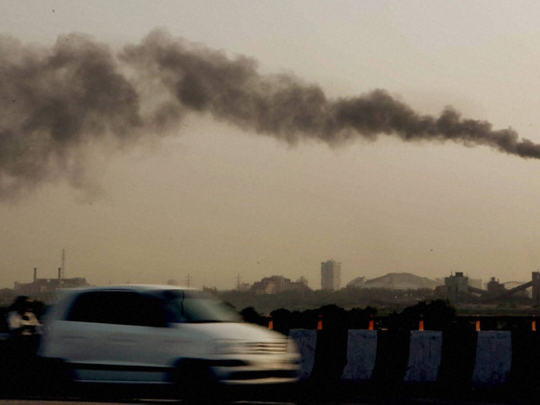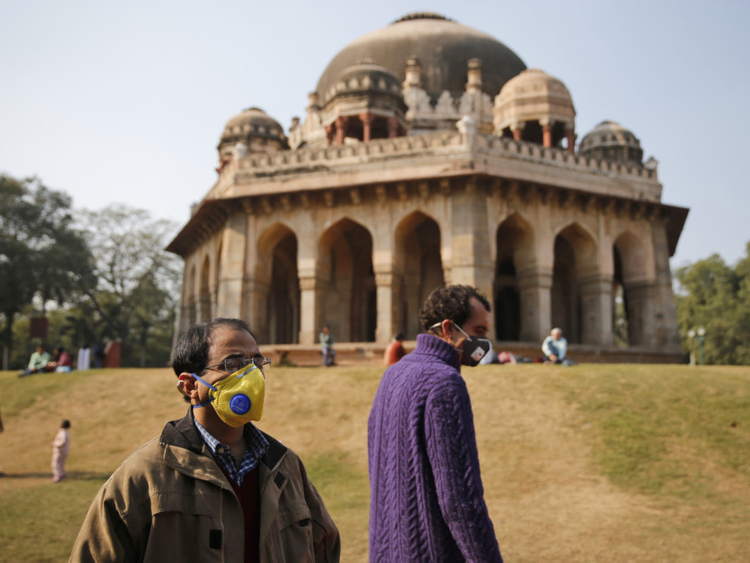
On a recent Sunday night in India’s smoggy capital, Husain Akbar’s 6-month-old daughter, Inaara, woke up with laboured breathing. Terrified, he and his wife raced the baby to a hospital, where she was treated.
Delhi’s terrible air — believed by some to be the worst in the world — caused the scary episode, the doctor said.
Akbar later penned a heartfelt message on his Facebook page, asking friends to take seriously the government’s emergency air quality control measures, announced in December 2015.
“When your baby needs to be taken to the hospital in the middle of the night due to pollution related breathing issues, the reality of it all hits home like never before,” he wrote, urging: “Give the plan a shot. It might just improve things a little.”
Delhi’s government announced the measures — which include an alternate-day driving limit trial that’s already causing controversy — after several days of smog blanketed the city.
It was the strongest official response yet to India’s worsening air pollution problem and one that environmentalists and activists hope will spark a civic awakening for the country, where outrage about toxic air is just beginning to grow.
New Delhi, with 16 million people and 8 million vehicles, has the dirtiest air in the world, according to a 2014 World Health Organisation study.
“It’s become a very visible issue and it is shaping public opinion,” said Anumita Roychowdhury, the executive director of research and advocacy and head of the air pollution and clean transportation program at the Centre for Science and Environment in New Delhi. “People are beginning to see and react to the problem. We are beginning to see government taking decision on how to move forward. It’s a very good sign.”
In recent days, members of parliament have paraded in air pollution masks and cycled to their offices to draw attention to the problem. Organisers of a Facebook group called “Delhi Smug in Smog?!?” wore masks at a picnic they held in a garden near the landmark India Gate, which has been barely visible in the dirty haze.
There was daily news coverage of the pollution control measures, including a 15-day trial of a programme that restricts residents to driving on odd or even days, based on licence plate numbers, from 8am to 8pm starting January 1.
The state government aspires to reduce pollution by half, and has announced plans to shutter a coal-fired power plant and upgrade emissions standards.
“We had no choice,” Chief Minister Arvind Kejriwal said in a radio ad in which he urged citizens to comply with the driving limits. “I know it will be hard, but to reduce pollution, we have to suffer a little.”
Sales of anti-pollution masks as well as pricey air purifiers — “previously the sole preserve of the high and mighty, and foreign diplomatic missions” the “Times of India” newspaper noted — soared.
The Sweden-based company Blueair, for example, which supplies air filters to the US Embassy, experienced a five-fold increase in sales in November 2015 after the Diwali holiday, when fireworks left clouds of smoke over the city, said Bengt Rittri, the chief executive.
Noorul Huda, a homemaker who lives in Old Delhi, said she has been struggling with whether to keep her three school-age children indoors all the time. She is thinking of buying her first air purifier, despite its $538 (Dh1,976) price tag. “We have to buy it. We have a water purifier, why not an air purifier?” she said.
In China, outrage over the country’s pollution levels — officials issued their first “red” alert because of poor air quality in Beijing in December 2015 — has been driven by a motivated middle class and plays out on social media sites such as Weibo. This has not been true of India until recently.
“A lot of people have a very indifferent attitude,” said Pooja Dodd, 41, a lawyer who organised the masked “Delhi Smug in Smog!?!” picnic. “They may feel pollution is killing them but not many of them want to do something about it.”
But that is changing, especially as those suffering respiratory problems because of the bad air continues to rise. A recent study found that 43 per cent of Delhi schoolchildren have reduced lung function.
Amit Kumar, 35, who runs a small hosiery supply company, sent his wife and 3-year-old daughter to live in his home village in the neighbouring state of Uttar Pradesh until the air improves.
“I ride a motorcycle and inhale poison every day,” he said. “I hope Kejriwal’s plan will work. It may create some problems initially, but if we try to adjust, we can make Delhi a better place. It’s the best city in India.”
Critics have said that the Delhi government’s alternate-day driving plan has been tried in other major cities with mixed success. The city’s public transport system — which is an estimated 10,000 buses short of need — is not equipped to handle a large influx of riders, they say.
In addition, most Delhi residents travel on foot, bicycle, public transport and on scooters rather than private cars, which remain the province of the affluent. Vehicles comprise only about a quarter of the hazardous PM2.5 particulate matter that can be damaging to health. Other contributors are road dust, cooking with firewood and emissions from power plants and other large-scale industries.
Akbar, a cinematographer who has lived in Delhi for 25 years, has coped with his daughter’s breathing episode by keeping the windows closed. He has always dreamt of buying a property in the foothills of the Himalayas, and now the time for that may come sooner rather than later.
The new plan, he said, is obviously not a perfect solution to the “crazy pollution”. But “people are talking a lot more, so hopefully the discourse changes for the better”, he said. “Maybe something good comes out of it. Who knows?”
–Washington Post













